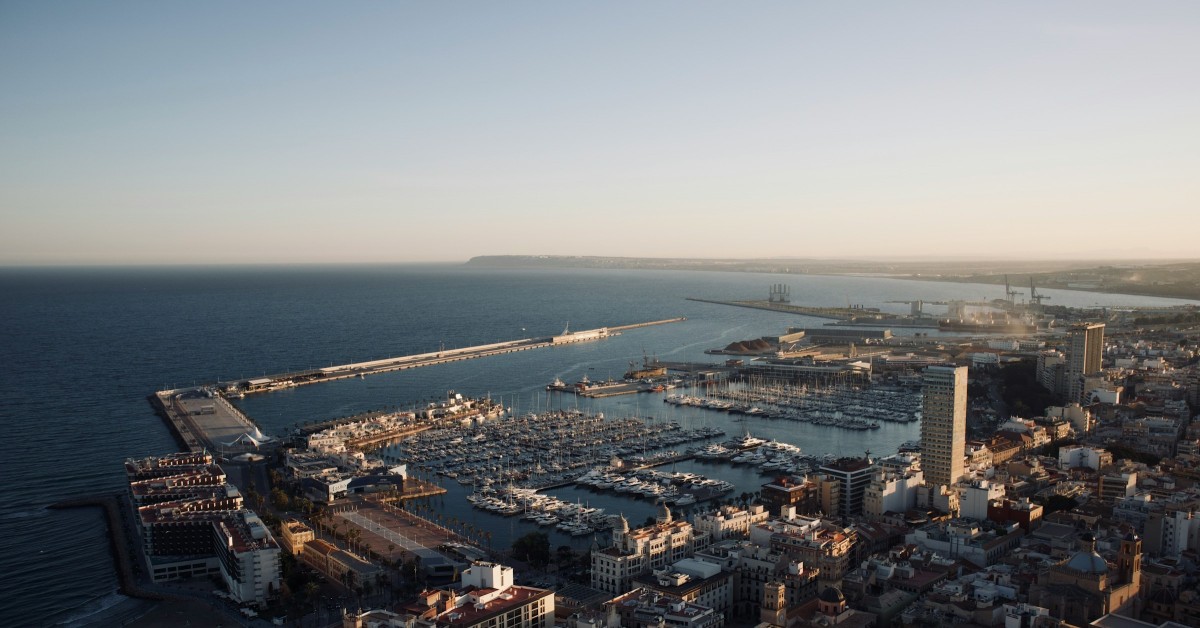
The Real Estate Yearbook of the Property Registrars describes the property market in 2023. Transactions by foreigners are once again performing excellently, with three consecutive years (2021-2023) of substantial growth within the national market, after four years of declines (2017-2020) and a pandemic in between, though the Registrars emphasise that their weight has remained above 10% of total transactions since 2013.
And in 2023, foreigners accounted for 15% of total home sales (compared to 13.8% in 2022), exceeding 87,300 transactions. In 2022, they exceeded 88,800 transactions with a lower percentage in their best year since records began. “This situation shows the current strength of foreign demand in the real estate context,” the Registrars highlight.
At this level of purchases, nationalities are increasingly varied
As for nationalities, the British hold on to the top spot (9.5%) with more than 8,100 transactions but they have increasingly less relative weight in the overall home purchases made by foreigners. This year, they have fallen 1.54 percentage points (pp). They are followed by Germans (7.3%) with more than 6,200 and French (6.7%) with more than 5,700, keeping the trio of leading nationalities, but they also lose weight, with 2.2 pp and 0, 32 pp less, respectively.
But this decline in transactions by these three nationalities has been offset by other nationalities gaining more importance, such as Moroccans, with 5.4% of purchases (0.24 pp), Belgians with 5.3% (0.11 pp) or Italians with 5.2% (0.61 pp).
“The good performance in the evolution of home purchases by foreigners in recent years has been due, in part, to new nationalities buying properties in Spain but there is a broader and more heterogeneous distribution of weights,” the Registrars highlight.
Other nationalities have grown more during the last year, although in absolute values they are still below this outstanding group of countries. Of the 17 leading nationalities, in addition to the three mentioned, three others declined: Romania, the Netherlands and Sweden.
But the rest increase, and citizens from Russia (1.20 pp), Ukraine (0.89 pp), China (0.66 pp) or the US (0.39 pp) stand out. The increase of 1.48 pp to 28.21% of the total operations by foreigners of other, not-so-prominent nationalities is also notable. Among them are more than 24,000 transactions by Mexicans, Venezuelans, Colombians, Peruvians, Portuguese or Czechs, among others.
The most popular places: Alicante, Santa Cruz de Tenerife and Malaga
The demand for housing by foreigners has been positive in most of the country. At the regional level, 13 autonomous communities have registered annual increases in the relative weight of home purchases by foreigners, although in two of the most notable ones – the Balearic Islands (31.5%) and the Canary Islands (28.5%) – they have reduced their weight over the overall operations, up to 2.88 percentage points in the Mediterranean islands.
Others such as the Valencian Community (29.3%), Murcia (23.8%) and Catalonia (15.8%) rose significantly, from 4.75 pp in the Murcia region to 2.44 pp in the Valencian Community and 2.23 pp in Catalonia. Meanwhile, Andalusia (15%) lost just 0.08 pp.
At the provincial level, the trend continues and the greatest weight of house purchases by foreigners occurs in Alicante (44%), which is increasingly close to half of operations. This is followed by Santa Cruz de Tenerife (35.7%), Malaga (33.7%), the Balearic Islands (31.5%), Girona (29.9%), Murcia (23.8%), Las Palmas (22. 1%), Almeria (19.9%), Tarragona (16%) and Castellon (14.5%).
In absolute terms, and with calculations made by idealista/news based on percentages, Alicante and Malaga have more than 37% of the total transactions carried out by foreigners, and if you add Barcelona and Valencia, it exceeds half of the sales. In the Valencian province, there were more than 21,000 transactions and more than 11,400 in Malaga. Barcelona has more than 7,500 and Valencia and Murcia have 5,000 transactions by foreigners. Behind them, the Balearic Islands have fallen this year, with just over 4,400, as well as Madrid and the surrounding areas of Santa Cruz de Tenerife and Girona.
Nationalities have geographical preferences and are determining factors when deciding to purchase a home in Spain. The Yearbook confirms how the British record higher weights in home purchases in Andalusia (15.3%) and the Valencian Community (9.9%), while the Germans opt for the Balearic Islands (38.2%), the Valencian Community (6.3%) or Canary Islands (14.4%), and the French are more set on Catalonia (17.1%) and the Valencian Community (5.6%).
At the provincial level, the British bought 12% of the homes that foreigners acquired in Alicante, that is, about 2,500 units. In Malaga, it was 15% – around 1,700 units. Meanwhile, that 38% of German homes in the Balearic Islands represent another 1,700 operations. The French were the main buyers in Girona (42%), exceeding 1,700 houses.
In the largest provinces, such as Barcelona or Madrid, purchases made by foreigners are more distributed and the percentages are lower. In Barcelona, Chinese citizens (10%) exceeded 750 transactions, while in Madrid, those who bought the most houses were Romanians (12%) and Chinese (12%), that is, more than 500 for each nationality.
Used homes and properties over 80 m2 – the typical profile of foreign purchases
In overall home sales, foreigners have more weight than nationals in smaller homes, but the difference is not particularly significant, since they also use them more as second homes. But if we look in more detail at the type of home that foreigners buy, homes of more than 100 m2 predominate over the total, with 34.5% of all transactions.
While 25.2% are for medium-sized homes – between 60 and 80 m2 – followed by those of 80 to 100 m2, with 20%. The smallest weights are for homes of less than 60 m2.
Half of the properties bought by Americans were over 100m2, ahead of the Dutch (44.7%) and the British (41.9%). While Argentines (10.9%), Italians (9.6%) and French (8.4%) were the weight of smaller houses – less than 40 m2.
By home type, Belgians (24.3%), Dutch (24.2%) and Poles (23.9%) have the greatest weight of new homes, according to each nationality's weight. For second-hand homes, it is the French (90.3%), Argentines (89%) and Irish (88.8%) who have the highest volume among their own transactions.
Of purchases by foreigners, over 8,000 homes (9.7%) were over €500,000. Of the total of these purchases, 49.6% were made by EU citizens and 50.4% by non-EU. “Non-EU citizens can benefit from the measure of obtaining a residence permit, and their weight increased by 8.13 pp during the last year,” the Registrars recall.
Of the purchases made by foreigners in each autonomous community, the Balearic Islands (31.7%), the Community of Madrid (19.6%), Andalusia (15%) and Catalonia (12.6%) – regions with already normally high prices – saw the most purchases of over €500,000.
